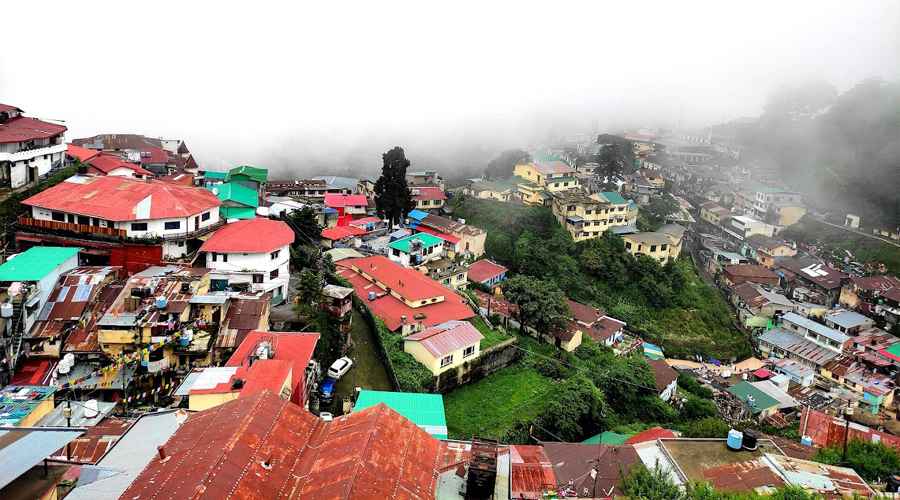India is blessed with some of the world’s most awe-inspiring monuments, and among them, the Ellora Caves stand tall as a true masterpiece of human imagination, devotion, and craftsmanship. Situated in the Aurangabad district of Maharashtra, these caves are not only a marvel of ancient engineering but also a testimony to India’s pluralistic cultural spirit. Carved painstakingly into the Charanandri Hills, the Ellora Caves are celebrated as a UNESCO World Heritage Site and continue to inspire historians, archaeologists, and tourists from across the globe.
Historical Significance
The Ellora Caves were constructed between the 6th and 10th centuries CE, during the reign of the Rashtrakuta, Kalachuri, and Chalukya dynasties. One of the most remarkable aspects of these caves is that they house monuments representing three major religions—Buddhism, Hinduism, and Jainism—co-existing side by side. At a time when religious harmony was tested in different regions of the world, Ellora stood as a center of inclusivity, cultural collaboration, and spiritual convergence.
The complex consists of 34 caves that were excavated out of volcanic basalt rock. These are not natural caves but man-made monuments hewn from solid rock using primitive chisels, hammers, and immense patience. The labor and skill required to carve entire temples within a single rock mass is mind-boggling and continues to raise questions about how such precision was possible more than a millennium ago.
Layout of the Cave Complex
The Ellora caves extend over two kilometers and are divided into three sections:
1. Buddhist Caves (Caves 1-12):
Dating from around the 6th to 8th centuries CE, these caves include monasteries, prayer halls, and exquisite carvings of the Buddha. The most famous among them is Cave 10, known as the Vishvakarma or Carpenter’s Cave, with its intricately designed chaitya hall and a seated Buddha under a stupa-like structure.
2. Hindu Caves (Caves 13-29):
These caves represent the pinnacle of stone carving at the site and were constructed between the 7th and 9th centuries CE. They house temples dedicated to Hindu deities like Shiva, Vishnu, and various other forms of divinity. Among them, Cave 16—famously known as the Kailasa Temple—is the jewel of Ellora.
3. Jain Caves (Caves 30-34):
Built in the 9th and 10th centuries CE, these caves are smaller but no less intricate. Dedicated to Tirthankaras of Jainism, they reflect a sense of asceticism, finely detailed carvings, and delicate motifs, showcasing the profound philosophy of spiritual restraint that is central to Jain belief.
The Marvel of Kailasa Temple
If there is one monument that defines Ellora, it is undoubtedly the Kailasa Temple (Cave 16). This monolithic structure was carved top-down from a single massive rock, an approach rarely seen in world architecture. Instead of building up from the ground, artisans excavated downwards, removing more than 200,000 tons of rock to reveal a freestanding temple with courtyards, gateways, and towers.
Dedicated to Lord Shiva, the temple was commissioned by Rashtrakuta king Krishna I in the 8th century. Its scale is astonishing—the temple is twice the size of the Parthenon in Athens and about the same size as St. Peter’s Basilica in Rome. The sanctum sanctorum, intricate sculptures depicting episodes from the Ramayana and Mahabharata, and the towering vimana (spire) all exemplify the mastery of ancient Indian stone architecture.
Artistic Brilliance
The Ellora caves are not just places of worship—they are museums of ancient Indian art. The sculptors managed to bring granite and basalt to life, creating figures so intricate that they appear almost dynamic. From ornate ceiling patterns and fluid carvings of gods and goddesses to depictions of musicians, dancers, and ordinary people, the caves pulse with a sense of cultural vitality.
The fine balance of spirituality and artistry is evident. In the Buddhist caves, for instance, serene meditating Buddhas inspire calmness, while in the Hindu caves, the vigor of Shiva in his cosmic dance of destruction radiates fiery energy. Meanwhile, the Jain caves exhibit precision and elegance, highlighting values of austerity and purity. This artistic diversity reflects not just craftsmanship but the varied philosophies and lifestyles these religions upheld.
Symbol of Religious Harmony
One feature that makes Ellora remarkable in global history is its representation of three distinct religions without conflict. The existence of Buddhist, Hindu, and Jain monuments side by side signifies an age of remarkable tolerance and cultural co-existence. Historically, Ellora was located along important trade routes, which brought travelers, merchants, and pilgrims. Such interaction of communities fostered mutual respect and collaboration, which is evident in the harmony of religious monuments built during overlapping periods.
Preservation and Legacy
Despite surviving centuries of natural wear, Ellora still stands majestic. However, as with many heritage monuments, it faces the challenge of preservation. Pollution, human interference, and erosion have threatened the fine carvings. Both the Archaeological Survey of India and UNESCO have undertaken measures to conserve the site, including controlled visitor access and scientific restoration techniques.
Even today, Ellora remains a major center for cultural tourism. Scholars from around the world continue to study it, artists find inspiration in its sacred motifs, and spiritual seekers sense the unified essence of multiple traditions coexisting without division.
Ellora in Modern Context
For present-day India, the Ellora Caves serve as more than just a historical monument—they symbolize the country’s ethos of pluralism and unity in diversity. They remind us that true progress is not measured merely by material wealth but by the generosity of spirit, tolerance, and creativity.
With rapid modernization, Ellora exemplifies that safeguarding heritage sites is not a luxury but a responsibility. Ancient monuments such as these do not merely tell us stories of the past; they also shape our identity and offer lessons for future generations.
Conclusion
The Ellora Caves are not merely rock-cut shrines—they are a timeless symphony in stone that echoes the collective spirit of humanity. They remind us of devotion that transcends individual faith, artistry that challenges imagination, and tolerance that knits communities together. Standing amid the caves, one feels transported across centuries, as if touching the rhythm of chisels and hammers that once gave voice to this astounding legacy.


